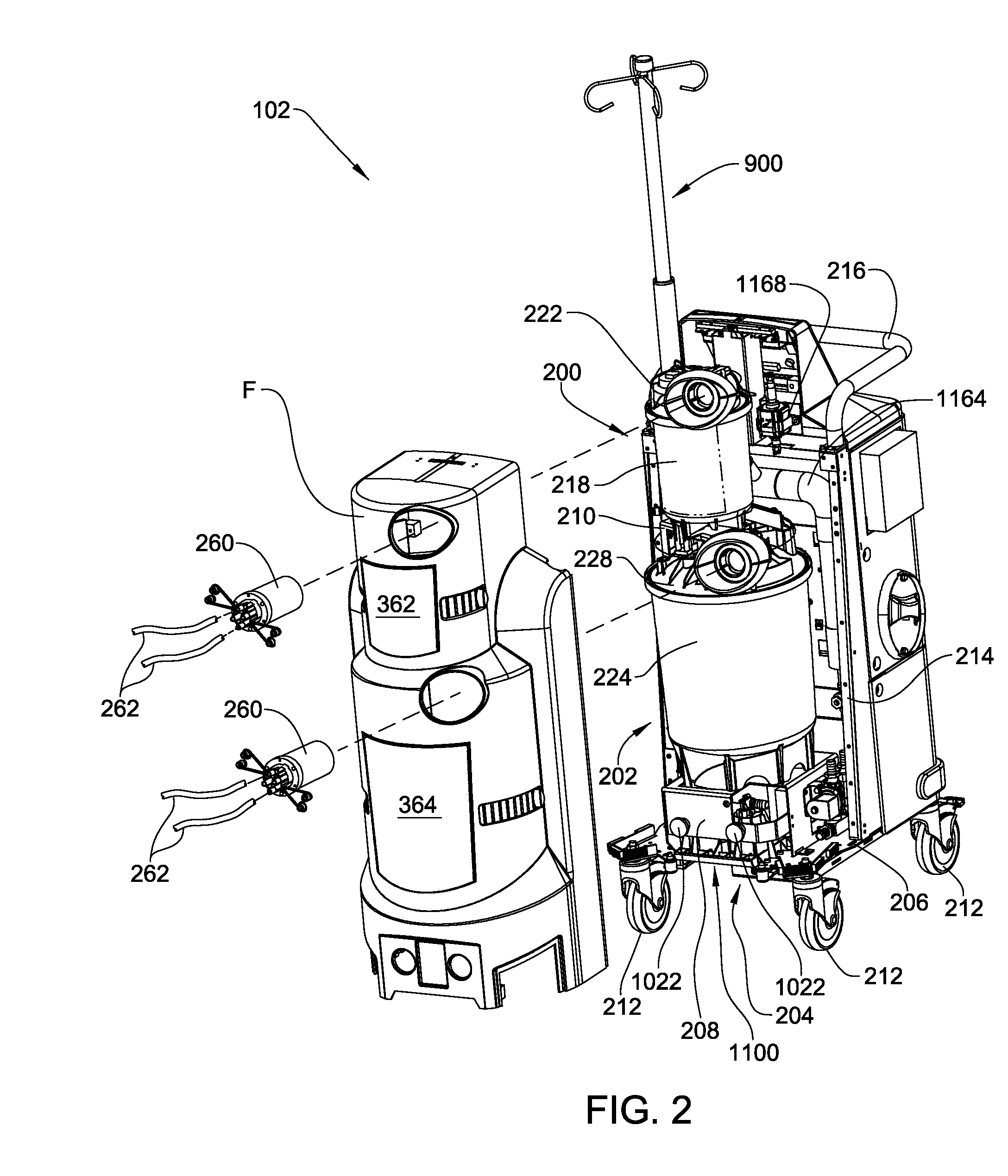Medical/surgical waste collection unit including waste containers of different storage volumes with inter-container transfer valve and independently controlled vacuum levels
a waste collection and medical device technology, applied in the direction of suction drainage containers, packaging, other medical devices, etc., can solve the problems of increasing the number of waste collection units, and increasing the number of users
- Summary
- Abstract
- Description
- Claims
- Application Information
AI Technical Summary
Benefits of technology
Problems solved by technology
Method used
Image
Examples
Embodiment Construction
I. Overview
[0110]Referring to the Figures, wherein like numerals indicate like or corresponding parts throughout the several views, a waste collection and disposal system for collecting and disposing of waste materials is shown generally at 100. The system 100 collects and disposes of waste material generated during medical procedures (e.g., surgical procedures) performed in a health care facility such as a hospital. The waste material may include bodily fluids, body tissues, irrigation liquids, and / or other materials that may be generated during various medical procedures. Often times, medical procedures require large amounts of saline and / or other irrigation liquids for irrigating an anatomical site. As a result, the system 100 is capable of handling large amounts of waste material.
[0111]Referring to FIG. 1, the system 100 comprises a mobile waste collection unit 102 and a fixed docking station 104. The waste collection unit 102 collects the waste material generated during the med...
PUM
| Property | Measurement | Unit |
|---|---|---|
| storage volume | aaaaa | aaaaa |
| storage volume | aaaaa | aaaaa |
| storage volume | aaaaa | aaaaa |
Abstract
Description
Claims
Application Information
 Login to View More
Login to View More - R&D
- Intellectual Property
- Life Sciences
- Materials
- Tech Scout
- Unparalleled Data Quality
- Higher Quality Content
- 60% Fewer Hallucinations
Browse by: Latest US Patents, China's latest patents, Technical Efficacy Thesaurus, Application Domain, Technology Topic, Popular Technical Reports.
© 2025 PatSnap. All rights reserved.Legal|Privacy policy|Modern Slavery Act Transparency Statement|Sitemap|About US| Contact US: help@patsnap.com



